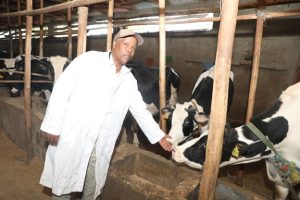
Jinping County is located in the southern part of Honghe Prefecture, Yunnan Province. It administers 13 townships, 94 villagers’ committees with 1,210 villagers’ group, and 7 communities with 46 residents’ groups. The total population of the county is 400,000. It is known as the “Hometown of Longevity” and “the Hometown of Butterflies in China.”
In recent years, Jinping County has been committed to creating the brand of “Hometown of butterfly Healthy Jinping” in line with the characteristics of the county.
The characteristics of the county can be summarized into five main aspects:
1.Mountainous Region along the border
The county borders five counties in two provinces of Vietnam, with a border line stretching 502 kilometers, the longest among all border counties in china that adjourn Vietnam. It has the Jinshuihe National Class I Port and two border residents’ passageways, as well as three boundary rivers (Nanlie River, Tengtiao River and Longbo River).
Along the border, there are six townships, 27 administrative villages, 334 villagers’ groups, 25,000 households and 112,000 residents. The total land area of the county is 3,677 square kilometers with mountainous areas accounting for 99.72 % of the total area and only 10.14 square kilometers of flat land.
The highest elevation is 3,074.3 meters, while the lowest is 105 meters forming a typical mountainous terrain with high mountains and deep valleys.
2.Diverse Ethnic Groups
Jinping is a Miao, Yao, and Dai Autonomous County, home to nine ethnic groups: Miao, Yao, Dai, Hani, Yi, Han, Zhuang, Lahu (Kucong people), and Blang (Mang People). Among them, the Lahu and Blang are “ethnics groups with cross stage development”. The ethnic minority population accounts for 88.12% of the total population. In January 2023, Jinping County was designated as a National Level Model for ethnic unity and progress.
3.Abundant Resources
The county has rich land resources with 1.1648 million acres of arable land (an average of 3.6 acres per capita) and 3.713 million acres of forestland (an average of 11.5 acres per capita). It also has abundant water resources with an average annual rainfall of 2,358.6 millimeters, ranking first in Yunnan Province.
There are 303 rivers within the county with the volume of surface water resource of 4.368 billion cubic meters and an underground water resource reserve of 1.258 billion cubic meters. Many sources of water meet the standards of natural mineral water offering unique advantageous for developing mid-to-high-end products of drinking water.
The county is also rich in mineral resources, with major minerals including iron, titanium, scandium, gold, copper, and zink. A total of 51 mineral deposits have been identified and in 2024 four large rare earth mines were discovered in Madaidi Township and Mengqiao Township.
The county also boasts rich tourism resources with 43 centenarians who are still alive, making it the first “Hometown of Longevity in China” in Yunnan Province. Located in Ma’andi Township, the “China Red River Butterfly Valley” is home to over 320 species from 11 of the 12 butterfly families found in china.
Every May and June, hundreds of millions of butterflies emerge, creating a rare ecological spectacle that has been recognized by the butterfly Branch of the Entomological Society of China as the “Hometown of Butterflies in China” and has been continuously reported by China Central Television for several years.
4.Good ecological environment
The county has a 630, 000-acre Fenshui Ridge National Nature Reserve and an 180,000-acre landscape of Hani Terraced Fields. It features a distinct vertical climate and rich biodiversity, earning it the reputation of being the “Gene Bank of Biodiversity in Southern Yunnan.”
The proportion of days with good air quality in this area has reached 99.7 % with a forest coverage rate of 63.94 %. The average annual concentration of negative oxygen ions is over 2,754 per cubic centimeter, with a relative humidity of 84 %.
The excellent ecological environment enables the production of high-quality agricultural and special products that are unique in the market allowing for seasonally staggered marketing and fresh products every day and year round production.
The main local specialties currently include: 400,000 mu of rubber, 196,000 mu of bananas, 260,000 mu of winter-grown ginseng fruit and 38,500 mu of sugarcane.
5.Border Opening-up
The county is located at the forefront of Yunnan’s efforts to build a gateway facing South Asia and Southeast Asia. Externally, Jinping faces Vietnam and Laos. The Jinshuihe Port is 51 kilometers away from Lai Chau, the capital of Lai Chau Province in Vietnam and 580 kilometers from Hanoi.
From Jinshuihe Port, passing through Xizhuang Port in Dien Bien Phu Province of Vietnam and Bangang Port in Mengami County of Phongsaly Province in Laos, one can enter Laos after travelling a distance of 230 kilometers. Domestically, Jinping has the domestic large market and the five national-level open development platforms of Honghe Prefecture as its backing.
With the completion and opening to traffic of the Manjin Expressway, Jinping has fully established a modern transportation system featuring internal connectivity and external accessibility, which is convenient and efficient.
In particular, in June 2022, the State Council approved the expansion of the Jinshuihe Port from a bilateral port between China and Vietnam to an international multilateral port, which will bring opportunities for Jinping to further expand its openness.
In 2024, Jinping County achieved a regional gross product (GDP) of 10.055 billion yuan, representing a year-on-year growth of 6.3%. The growth rate was higher than the average levels of the whole county, the province and the Prefecture.
The investment in fixed assets increased by 15.9% year-on-year, which was higher than the average growth rate of the prefecture. The total retail sales of consumer goods grew by 10%, ranking first in the prefecture. The local general public budge revenue was 213 million yuan and the local general public budge expenditure was 2.648 billion yuan.
The per capita disposable income of urban and rural residents reached 42,296 yuan and 14, 466 yuan respectively growing by 4.6 % and 7.5%. The growth rates ranked first and third respectively in the prefecture and the momentum of high-quality economic developing is getting better and better.
By the way, Yunnan enjoys a sound momentum in economic and social development. Guided by the new development philosophy, the province continues its efforts in deepening supply-side structural reform to strengthen new drivers of development. With continued endeavor to develop open, innovative, higher-end, IT-based and environment friendly industries such as petroleum refining, tobacco, hydropower, and non-ferrous metals are on the way to transformation and upgrading.
Good results have been seen in the development of the eight key industries ( namely biomedicine, and general health, tourism and culture, information, modern logistics, modern highland agriculture, new material, advanced equipment manufacturing, and food and consumer goods manufacturing) and the “Three Cards” ( namely green energy, green food, and a destination for healthy living).
With efforts to tackle areas of weakness and break development bottlenecks, new progress has been made in the construction of infrastructure. The province registered 3.153 trillion yuan (442.7 billion US dollars) of GPD in 2014, a year on year growth of 3.3%. The local general public budget revenue totaled 219.32 billion yuan, an increase of 2% from last year.
BY ADDISALEM MULAT
THE ETHIOPIAN HERALD TUESDAY 20 MAY 2025




